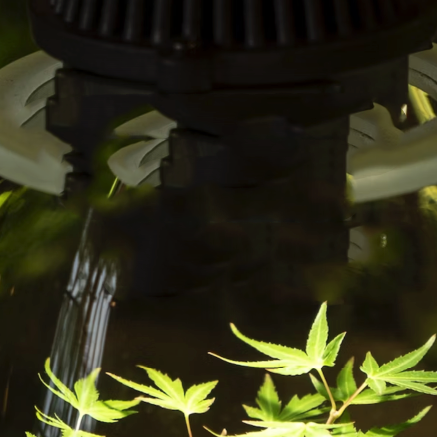What Is the Best Light for Growing?
It was not so long ago (5-10 years) that it was accepted wisdom that the most cost-effective grow lights were fluorescent for small vegging plants, Metal Halide (MH) for medium-sized vegging plants, and High Pressure Sodium (HPS) grow lights for larger plants in flowering/fruiting.
Since then, new types of grow light have come along, and there have been huge advancements in LED grow lights. Plasma lights, Ceramic Discharge Metal Halide (CDM), and 400-volt HPS technology have also entered the market, giving growers even more choices.
Each type of grow light produces a different spectrum output, radiant intensity (affecting canopy penetration), and effective area of illumination (footprint). These factors vary between brands and models.
So, with all this choice, how do we decide which grow light is best for us?
The answer involves considering spectrum, radiant intensity, and lighting footprint, as well as environmental factors such as grow space dimensions and heat generation. This article delves into light and the aspects we need to assess scientifically. Later articles will explore measurement methods and specific grow light models, culminating in recommendations for growers and their spaces.
What Is Light?
Light is a form of electromagnetic radiation, which includes radio waves, microwaves, and x-rays. All electromagnetic radiation consists of energy waves traveling at the speed of light. These waves are classified by their wavelength—the distance between wave peaks.
The electromagnetic spectrum spans wavelengths from thousands of metres (radio waves) to trillionths of a metre (x-rays). The visible spectrum for humans is a narrow band, roughly between 400 and 700 nanometres (nm). Wavelengths above 400nm appear violet, while those below 700nm appear red. The colours of the rainbow correspond to specific ranges:
- Violet: 400nm - 430nm
- Blue: 430nm - 480nm
- Cyan: 480nm - 520nm
- Green: 520nm - 560nm
- Yellow: 560nm - 590nm
- Orange: 590nm - 630nm
- Red: 630nm - 700nm
Objects appear a certain colour because they reflect light of corresponding wavelengths. For example, blood appears red because it reflects light between 635nm and 700nm while absorbing other wavelengths.
Plants, like humans, respond to different light wavelengths and intensities, stimulating various biochemical reactions within their cells.
How Does Light Travel, and How Does This Affect My Plants?
Electromagnetic energy travels in little packets called photons. Apart from the spectrum, the other very important measurement of visible light is how many photons per second arrive at our eyes. This dictates how bright something appears to us. Brightness can also alter our perception of a colour. For example, something that appears to be yellow-orange in normally lit conditions will begin to appear brown if the light level dims.
Now, plants need light - this we know. However, just the total brightness of a source of light is not the only thing that we need to consider when comparing grow lights. There is a measurement called radiant intensity which refers to a particular attribute of brightness. Radiant intensity refers not only to the brightness of a light, but also to the size of the source of the light.
For example, think of water coming out of the end of a garden hose pipe when you hold it horizontally. If the hole in the nozzle on the end of it is quite large then the water will travel, maybe, only a foot or 2. However, if the size of the hole is reduced by either adjusting the nozzle or putting your finger over the end then the water will travel much, much further, about 6-10 feet or so!
So, going back to how this relates to grow lights, let's take the example of a panel of fluorescent tubes about 2 feet by 2 feet which emits 6300 lumens. Those 6300 lumens of light is being emitted from quite a large area. This means that although quite bit of light is being produced, it is of low radiant intensity.
For comparison, if we consider a low power HPS lamp (70 watt or so) which produces a similar 6300 lumens, the light is coming from a small filament within a comparatively small lamp. A lot of light is coming from a small source and this means that it has high radiant intensity.
The large panel of fluorescent tubes will illuminate a large area, but the light does not have much depth penetration to get the light past the tops of the plants and to the lower leaves and branches further down. Meanwhile, the 70 Watt HPS, with it's considerably higher radiant intensity (and therefore penetration), will drive the light further down to the lower portions of a plant.
Now we know a bit about what light is. We also know that the 3 main aspects of light that we need to consider when assessing and choosing a grow light are: the output spectrum, the radiant intensity, and whether it will cover the area that we need it to. We need to take into account other characteristics too such as a grow light's electrical efficiency and also it's heat output, but those will be discussed in a later article.
In Part 2 of this series of articles we will take a plunge into how we can measure those 3 main aspects of a grow light's light output. See you soon!
